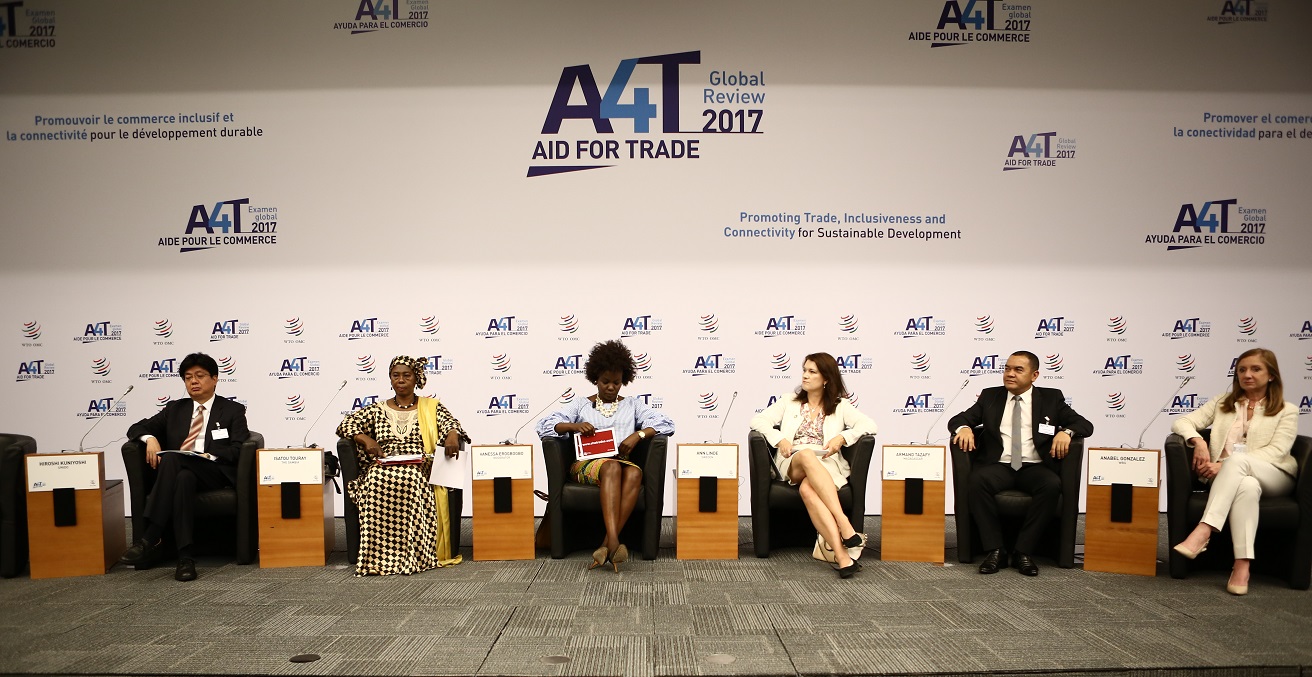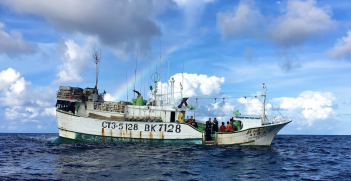Environment Overlooked in Australia's Aid for Trade Program

Australia’s Aid for Trade agenda does little to advance the UN’s Sustainable Development Goals, with a view that the environment is primarily a tool for economic prosperity.
The UN post-2015 development agenda intends, as the name of the new Sustainable Development Goals (SDGs) suggests, to “put sustainable development at the core” of global cooperation. This is because, so far, the international community has failed to integrate the social, economic and environmental dimensions of sustainability which are part and parcel of sustainable development.
The important role of both trade and development assistance or aid for achieving poverty reduction and sustainable development has long been acknowledged by donors and development agencies. It was reiterated as a crucial means for achieving the Sustainable Development Goals (SDGs) of the post-2015 international development agenda.
An important driver for achieving the SDGs is XX the international Aid for Trade (AfT) initiative, launched in 2005 at the Hong Kong World Trade Organization (WTO) Ministerial Conference. AfT is based on the objective “to contribute to the economic development of recipient countries by using aid as an effective investment for bolstering productivity”. It is one of the principles of AfT that it should take into account, “the overall goal of sustainable development”.
Australian aid
The emphasis on the national interest has been remarkably consistent in the Australian aid program. In line with this, the renewed 2014 aid strategy states that the purpose of Australia’s aid program is “to promote Australia’s national interests by contributing to sustainable economic growth and poverty reduction”. This “new development paradigm” is about reshaping how Australia’s aid is delivered through mainly a renewed focus on private sector development and “a strong emphasis on aid for trade”, which are seen as crucial drivers to achieve sustainable economic growth.
There has also been a refocusing on which countries receive Australian aid. As stated in the aid strategy, “the aid program will have a sharper geographic focus”, with a stronger focus on the Indo-Pacific region because a “focus on our region is an expression of our national interest—stronger growth, prosperity and stability in the region is of direct benefit to Australia, Australians and citizens of our neighbouring countries”. Despite some incremental changes, it is still based on the old neoliberal ideology and development model.
AfT is about promoting sustainable economic growth and prosperity in developing countries through overcoming internal constraints to trade, increasing private sector involvement and more integration into the global economy. The overall objective of AfT is about “making a contribution to economic growth and poverty eradication through inclusive, sustainable development”. The proportion of AfT as overseas development assistance has continuously grown since the AfT initiative was launched by the WTO in 2006. In the Australian AfT agenda, private sector development is seen as “the most sustainable and effective path out of poverty”.
AfT is about stimulating trade opportunities through the provision of international aid. In Australia’s approach, there is a move away from aid towards trade, and rather than seeing both as complementary to achieve the goals of poverty reduction and sustainable development, they are presented as a choice. This representation of trade and aid, with aid helping trade through AfT, simplifies the complexity of international development and overlooks the complementarity of both aid and trade to achieve poverty reduction and sustainable development goals.
Sustainable development
Sustainable development has long been recognised as an important national and international policy objective. Sustainable development is about reconciling economic development with the constraints set by the natural ecosystems on which economic development and human life depend, and to do this in a socially just and equitable way.
Sustainable management and conservation of the environment is the cornerstone of long-term economic growth and social development. This policy is essential to ensuring that the aid program protects the environment and promotes ecologically sustainable development as required under The Environment Protection and Biodiversity Conservation Act.
There is global acknowledgement that efforts to alleviate poverty require understanding and sustainable management of ecosystem services because they provide substantial benefits to people. In particular, biodiversity makes a direct contribution to poverty reduction in at least five critical areas: food security, health improvements, income generation, reducing vulnerability to environmental change, and ecosystem services. Beyond an intrinsic value, biodiversity underpins the functioning of the ecosystems that support human existence, wellbeing and the provision of livelihoods.
Considering that the environment is so integral to economic prosperity, it is of concern that it receives little mention within Australian AfT discourse. Indeed, one sentence from the Department of Foreign Affairs and Trade’s Environmental Protection Policy for the Aid Program accurately encapsulates how the environment is conceptualised:
… the environment is integral to the economic prosperity of many developing countries, accounting for 36 per cent of the wealth of developing countries…
Firstly, the importance of the environment is linked with economic prosperity; essentially, its value is only derived from its ability to support economic practices. Secondly, saying that the environment is “integral” to the economic prosperity of many developing countries, rather than all developed and developing countries, positions the environment as something that only the poor are reliant upon. This diverts attention from the international responsibility of Australia as a global environmental citizen to do its part to achieve the global SDGs, which means, for example, addressing climate change issues at the national level.
Another indication of how “environment” is conceptualised in Australia’s aid and AfT program can be seen through the way the policy documents speak about the environment. The meaning of ‘environment’ in Australia’s aid and AfT approach is predominantly seen in economic terms as an ‘enabling environment’ for business, trade and investment. There is no mention of sustainable development or ecologically sustainable development in the aid and AfT documents. The reference to sustainability is in economic terms when it is attached to economic growth—“sustainable economic growth”—without acknowledging or addressing the link to a healthy and sustainable environment to propel that economic growth.
The way AfT is conceptualised and implemented in Australia’s international aid program at the moment does not adhere to the fundamental principles and the intent of the international post-2015 sustainable development agenda. There needs to be an urgent rethink of Australia’s “new development paradigm” and AfT agenda that will integrate environmental sustainability and acknowledges the important role of both aid and trade for achieving international sustainable development goals.
Brendan Garrett is currently completing a Master of Environment at the Office for Environmental Programs, University of Melbourne.
Dr Thomas Wanner is a senior lecturer at the Department of Anthropology and International Development, University of Adelaide.
This article is an edited extract from an article published in the Australian Journal of International Affairs on 20 August 2017. It may be accessed in its unabridged form here.





